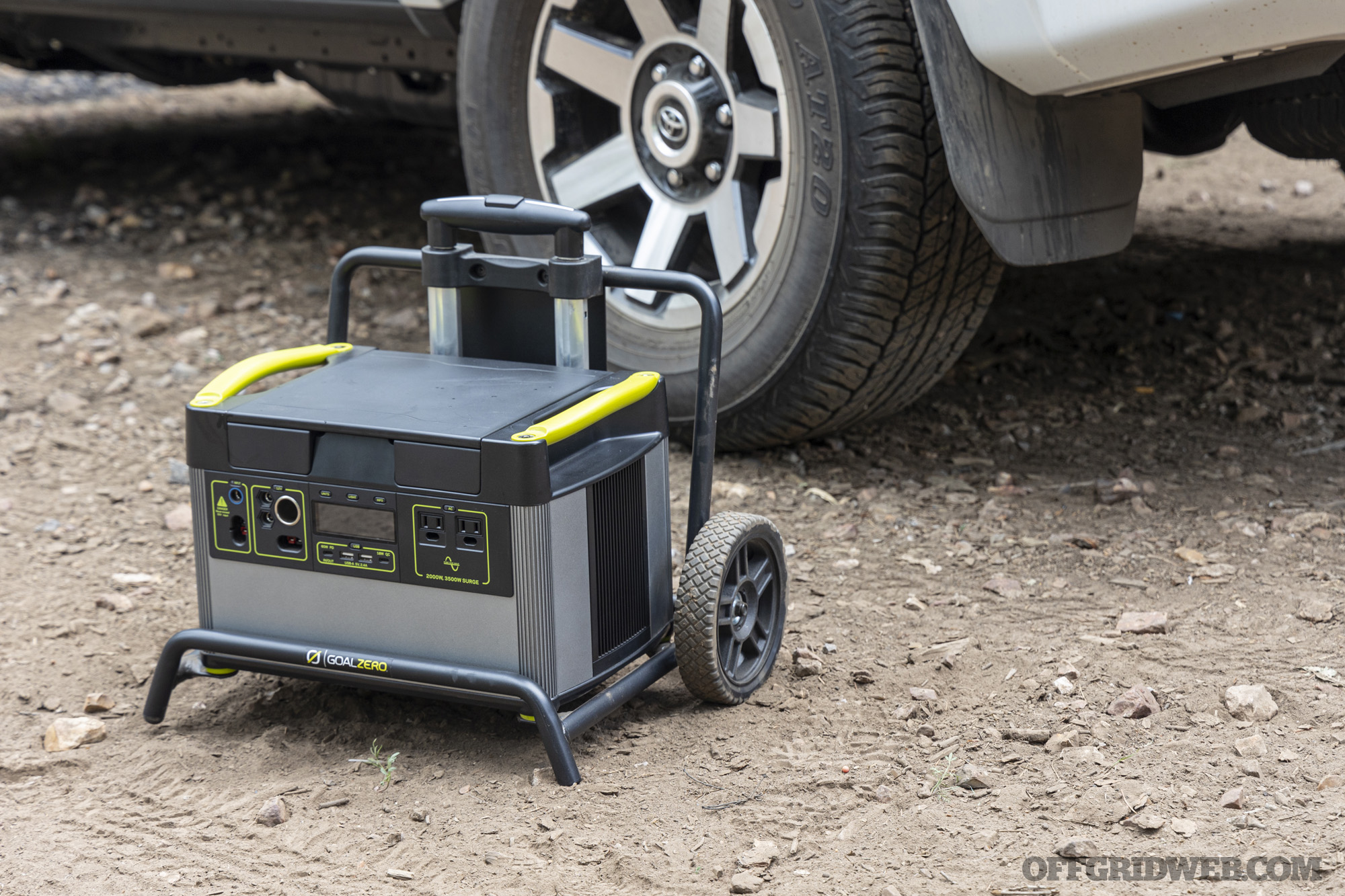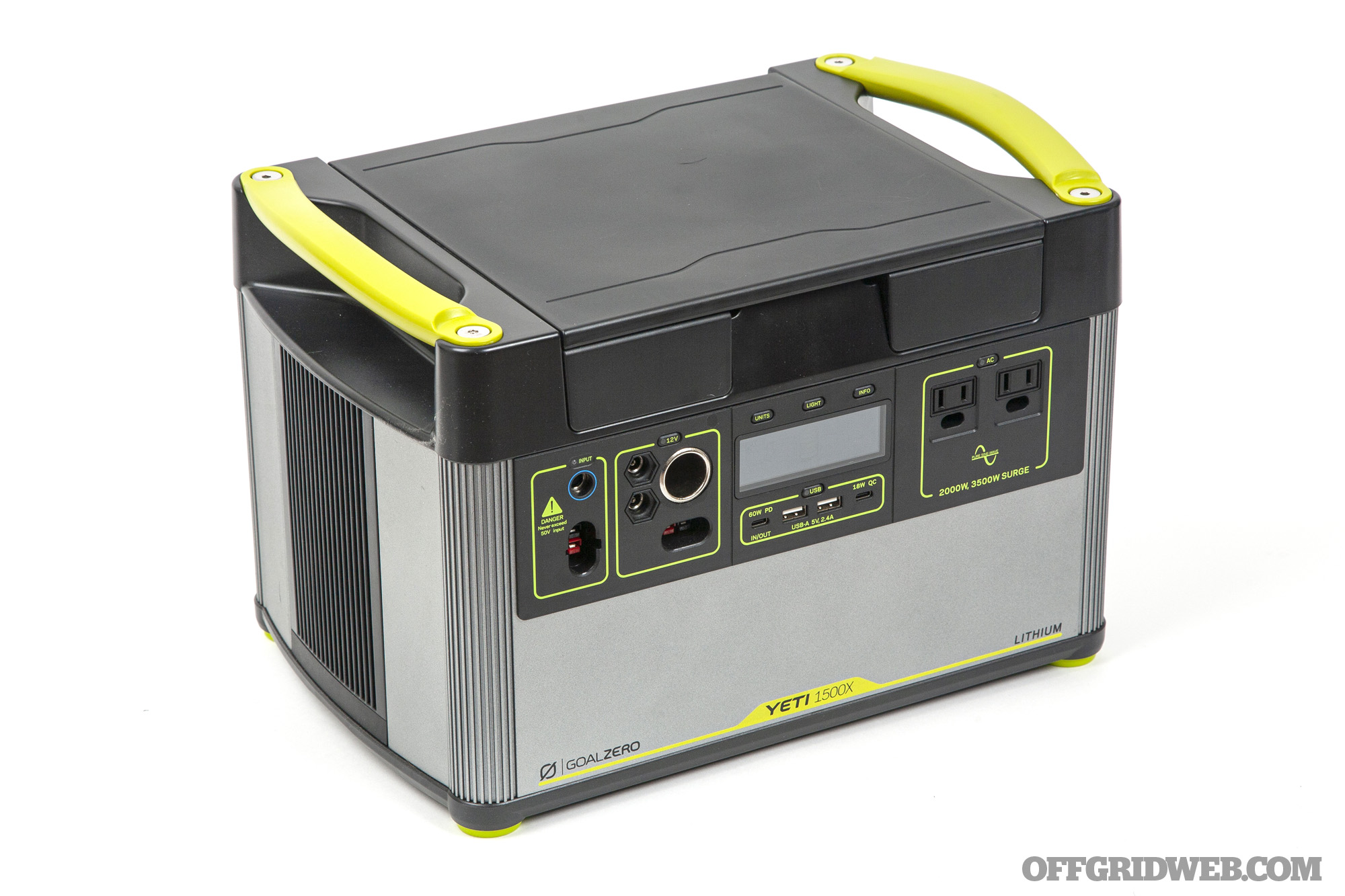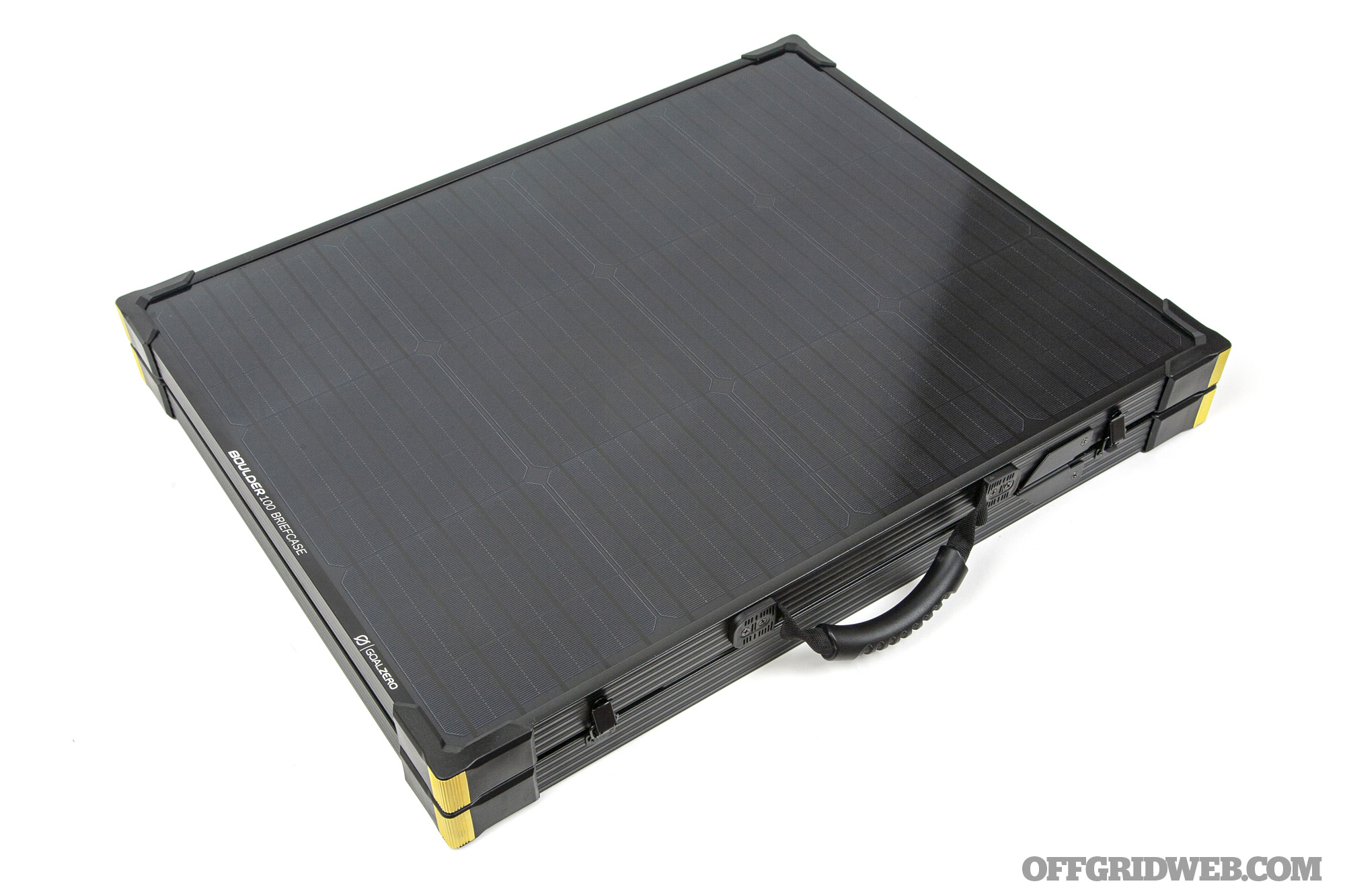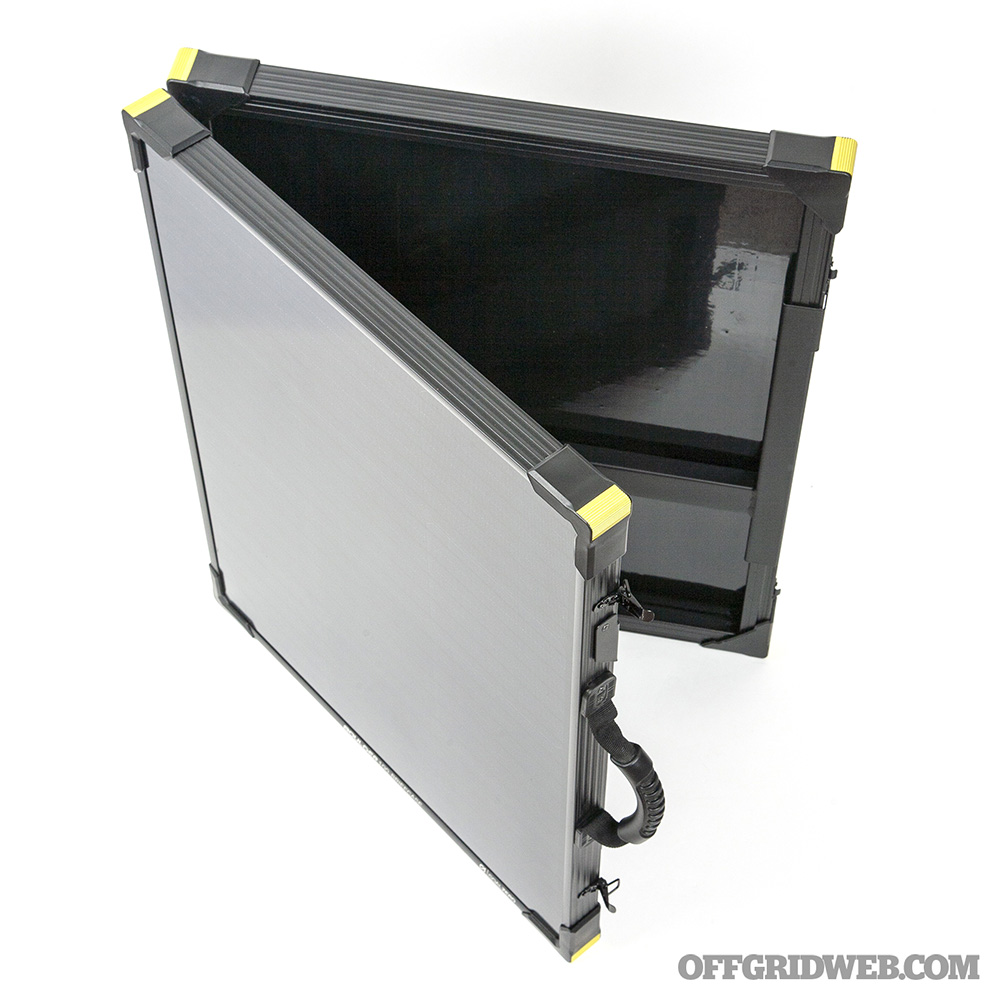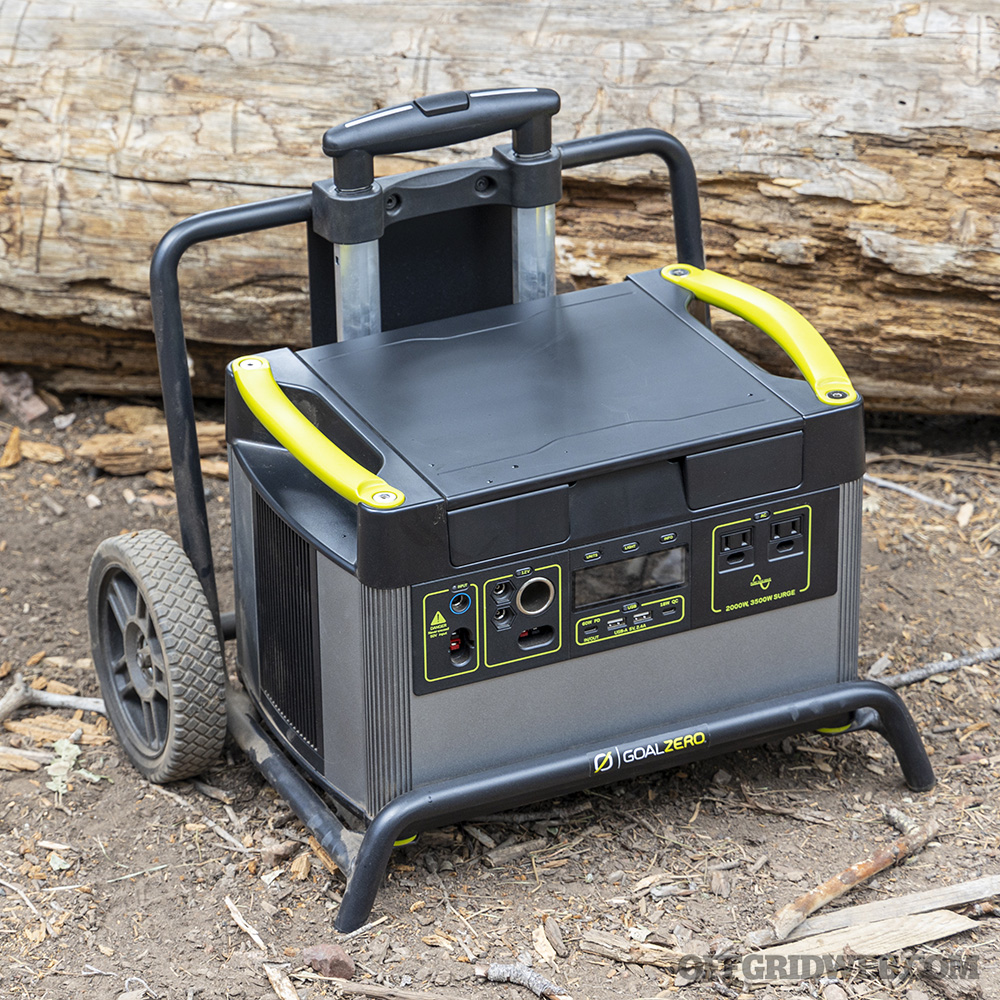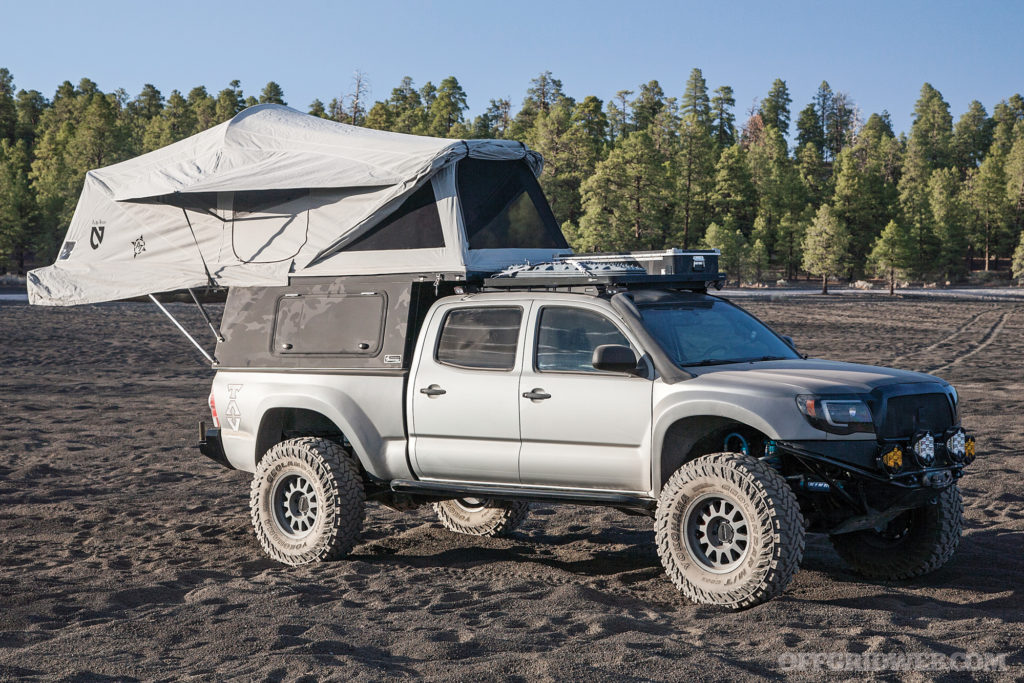Every day, we take for granted the ability to access a virtually-unlimited supply of electricity. It keeps our food cold, our homes warm, and our lights on, not to mention a myriad of computers, TVs, cell phones, washing machines, air fryers, and hair dryers. But life hasn’t always been this way — when we look at the grand scale of human history, reliable access to electricity is an infinitesimal blip on the radar. For thousands upon thousands of years, our ancestors lived without it, a fact that sounds almost unimaginable today. As you consider this, it’s easy to jump to an extreme conclusion. “I don’t really need electricity in an emergency situation,” you might think. “It’s nothing but a modern luxury! My great grandparents did fine without it.” No so fast. Humanity also survived for thousands of years without access to clean running water, sewer infrastructure, and antibiotics, but that doesn’t mean we should willingly go back to the Dark Ages. One could argue that just like these things, electricity has become a virtual necessity in the 21st century. Sure, you can survive without it, but life becomes significantly harder.
Electricity: A Resource Worth Stockpiling
With all this in mind, it’s wise to prepare a source of electricity for emergencies, just as you’ve likely prepared emergency sources of other consumables (water, food, medicine, and so on). For short-term situations, this might mean a pocket-sized USB power bank that can top off your cell phone enough to call a family member. But for long-term catastrophes or events involving multiple people, that little power bank isn’t going to cut it.
Above: The Yeti 1500X from Goal Zero offers a whopping 1,516 watt-hours of energy, enough to run a full-size refrigerator for 21 hours.
Let’s say you’re at home when a major storm wipes out power lines, leaving your entire neighborhood in a multi-day blackout. Can you keep your food refrigerated, or is it all going to spoil? Will you have reliable lighting, or will you be stumbling around by candlelight? What about running important medical devices, such as a CPAP machine for sleep apnea? Similar questions can be asked for scenarios where you’re away from home or entirely off-grid — can you keep enough headlamps, lanterns, radios, and/or satellite phones powered-up for the whole family? Under more mundane circumstances, can you keep your laptop and cellular hotspot charged while working from remote locations?
Generators vs. Power Stations
Above: A traditional generator is a useful tool for emergency preparedness, but produces substantial amounts of exhaust, heat, and noise. It also requires access to consumable fuel.
A traditional solution to many of these concerns is a gas- or diesel-powered generator, but these devices are not without some drawbacks:
- They contain moving parts that require periodic maintenance.
- They’re loud, which can be either a mild annoyance or a major safety concern depending on the circumstances.
- They produce heat and exhaust gases, so they must be used outdoors or in well-ventilated areas.
- Most importantly, they convert one limited resource (fossil fuel) into another (electricity).
Above: The Goal Zero Yeti 1500X contains lithium-ion batteries that provide silent, reliable power for a variety of large and small electronic devices.
Portable power stations, sometimes called solar generators or battery backups, address each of these concerns. Since they’re based on high-capacity batteries, they contain no mechanical moving parts aside from a few small fans, and they’re virtually silent. They produce no exhaust fumes and comparatively minimal heat. Best of all, they don’t require consumable fuel, and can be topped off at any wall outlet, charged inside a vehicle, or passively recharged off-the-grid using solar panels.
Above: Paired with a solar panel setup, such as this Boulder 100 Briefcase from Goal Zero, the Yeti becomes a standalone source of renewable electricity. It can also be charged from a wall outlet, vehicle, or even a traditional gas generator.
It’s not technically correct to call these generators, since they’re simply portable storage vessels for electricity from any other source. Rather than thinking of a power station as a replacement for a traditional gas generator, think of it as a versatile addition — after all, you can still charge the former from the latter.
The Goal Zero Yeti 1500X
Goal Zero is one of the most prominent names in the portable power industry, and has been producing power stations and matching solar panels for nearly 15 years. The company was initially founded in an effort to supply off-grid power to families in impoverished nations such as the Democratic Republic of the Congo. Since then, it has supported numerous humanitarian and disaster recovery projects in Southeast Asia, Africa, South America, the Caribbean, and the United States.
The earliest large power stations created by Goal Zero featured lead-acid batteries, not unlike what you might find under the hood of your car. These batteries were eventually replaced by modern lithium-ion cells, which are smaller, lighter, more shelf-stable, produce more consistent voltage, and can maintain efficiency in a much larger temperature range.
Above: The Yeti’s top tray offers storage for cables and accessories, as well as the included wall charger. Just don’t leave the charger here while it’s plugged in, especially with the lid closed, since it can overheat.
The Goal Zero Yeti 1500X is the company’s best-selling large portable power station, positioned mid-range between the compact Yeti 200X and the 106-pound Yeti 6000X (which, ironically, is about the size of a Yeti cooler — no relation between the two brands). We could write several pages about the technical specs of the Yeti 1500X alone, but in the interest of not boring all our non-electrician readers, we’ll keep it brief. It provides 1,516 watt hours of capacity (140.4 amp hours at 10.8 volts). You’re probably more familiar with milliamp hours, the measurement typically used for small power banks and flashlight batteries; the Yeti 1500X capacity equates to more than 140,000 milliamp hours. Here’s a quick rundown of performance with a few common devices:
- Smartphone (12Wh) – 127 recharges
- Laptop (50Wh) – 31 recharges
- Headlamp (5Wh) – 303 recharges
- 42” LED TV (100W) – 15 hours
- Mini Fridge (35W) – 44 hours
- Full-Size Refrigerator (65W) – 21 hours
In practical terms, it won’t replace a whole-house generator, but this 46-pound unit can easily keep a whole family’s small electronics powered for a week or more. It’ll also keep your fridge or other large appliances running long enough to make it through most short neighborhood blackouts.
Yeti 1500X Specifications
Battery Capacity
1,516 watt-hours (10.8 volts, 140.4 amp-hours)
Battery Type
Lithium-ion nickel manganese cobalt (NMC)
Operating Temperature
32-104 degrees F
Dimensions
15.3 x 10.2 x 10.4 inches
Weight
46 pounds
Above: The top tray contains an 8mm input port for solar or AC power, a 12V high-power output, and the pairing button for Goal Zero’s smartphone app. Additional components such as the Yeti Link expansion module can be installed here as well.
Inputs (AC or Solar)
1x 600W high-power charging port, 2x 150W 8mm charging ports
Outputs
2x AC outlets, 1x USB-C PD port (input or output), 1x USB-C QC port, 2x USB-A ports, 2x 6mm accessory ports, 1x 12V car port, 2x high-power ports, 1x Goal Zero expansion module port
MSRP
$2,000 (or $2,200 with pictured Boulder 100 solar briefcase)
Unboxing and Initial Issues
When we first received a Yeti 1500X test unit for this article, we decided to fully charge it for the first time. Unfortunately, this did not go smoothly. We placed the included charging “brick” in the accessory tray on top of the Yeti, plugged it in to the wall, and walked away for about 90 minutes. The flip-up cover was left open and the unit was charged in a 78-degree, well-ventilated room. Despite this, we returned to find the brick had become too hot to touch, and the unit was no longer charging. In fact, the brick got so hot that a hole was melted through the plastic tray beneath it. Shortly after this incident, the Yeti began to exhibit strange behaviors, such as beeping loudly every few minutes. We called Goal Zero and spoke to a very helpful and apologetic customer support representative, who walked us through a few tests over the phone. It was eventually determined that our Yeti would need to be exchanged for a new unit under warranty.
Above: A standard 120W wall charger (top) is included with the Yeti, but the charger that arrived with our first Yeti 1500X was evidently defective. Goal Zero replaced it under warranty. The optional 600W charger (bottom) will recharge the unit nearly five times faster.
On the upside, Goal Zero quickly shipped us a replacement Yeti and new charger, and everything functioned normally this time. A company representative stated that the excessive heat may have been caused by a faulty power brick, and said that this is the first one they’ve seen fail in such a manner. Regardless, we had no more problems from that point forward.
Testing the Yeti
Above: Although the Yeti 1500X has sturdy carry handles built in, it weighs 46 pounds, so the optional Roll Cart is a valuable accessory.
We spent several months using the Yeti 1500X, both around the house and in off-grid locations. It effortlessly powered a variety of USB devices, including phones, radios, flashlights, and camera battery chargers. Two 5V 2.4A USB-A ports, an 18W USB-C Quick Charge (QC) port, and a 60W USB-C Power Delivery (PD) port will handle most small-to-medium electronics with ease. In the garage, the Yeti powered a Dremel, drill, and a large shop vac without breaking a sweat. Inside the house, we tested it on multiple fans, a TV, a blender, a coffee maker, a laptop charger, and a mini fridge without any hiccups.
Strangely, the only reasonable device we found that gave the Yeti trouble was a car-camping air mattress inflator that ran on the 12V DC car accessory port. This pump was marked at 8A, less than the port’s peak draw of 13A, but it would still trip the Yeti’s circuit protection feature, resulting in a red light on the relevant output button. We suspect that turning on the pump caused a momentary spike above its own advertised 8A rating. Thankfully, tripping a circuit doesn’t require throwing a breaker or replacing a blown fuse — just press the button and watch the light reset from red to white. It’s also worth noting that the Yeti had no issue running a similar air pump off its AC inverter wall outlets, so choose a mattress inflator accordingly if you’re planning to use the Yeti for car camping.
If you install the Goal Zero app on your smartphone, you can pair it with the Yeti to monitor charging status, control preferences, activate or deactivate ports, and update the unit’s firmware. This can be done from nearby via Bluetooth, or from anywhere via WiFi Direct Connect.
Above: These Light-A-Life lanterns can be connected to the Yeti’s 6mm ports or daisy-chained to each other. Each features an integrated eight-foot cord and magnetic carabiner.
To add to the versatility of the Yeti, we picked up a few optional accessories. First, the Yeti Roll Cart ($100) is highly recommended if you’re going to use the power station in anything but a static position. It makes moving the 46-pound device much easier. Next, we got two Goal Zero Light-A-Life 350 LED lanterns ($40 each), which feature integrated, daisy-chainable 6mm power cords and carabiners. These lanterns are ideal for hanging inside a tent or awning next to the Yeti, and can produce 350 lumens of warm white light for hundreds of hours. A 600W wall charger ($200) makes it possible to recharge the Yeti in only 3 hours, as opposed to 14 hours with the standard wall charger.
Above: The Boulder 100 Briefcase solar panel folds in half for easier transport and storage. Each panel is enclosed in an aluminum frame and protected by tempered glass.
Finally, for a fully off-grid-capable setup, we paired our Yeti 1500X with a Goal Zero Boulder 100 Solar Briefcase ($300, or $200 if purchased with a Yeti 1500X). This consists of two 50W solar panels chained together inside a sturdy aluminum frame. For easy transport, the Boulder 100 Briefcase can be folded in half and stowed in an included canvas bag.
When our Yeti needs to be topped off, we just unfold the “briefcase,” prop up the stand, face the panel into the sun, and plug in the integrated 8mm cable. The Yeti’s LCD display immediately shows how much power the panel is producing, as well as an estimated time until fully charged. Under ideal circumstances, Goal Zero says the Boulder 100 will fully recharge the Yeti 1500X in 18-36 hours. If you have multiple panels, they can be linked to charge the Yeti much faster.
Conclusion
Once we got past the warranty exchange hiccup we had with our first Yeti, we were impressed by the capabilities and ease of use this power station offers. Although it’s certainly possible to wire up some car batteries to create a DIY emergency power source for less money, you’ll need to invest a lot of time and research into that project, and it certainly won’t be as portable.
The Yeti 1500X is easy to pick up and place in the trunk of a car, and we found that incredibly helpful for road trips and camping weekends. Its display makes it clear exactly how much power is remaining and how long a specific device (or devices) can run; in the unlikely event a circuit is overloaded, the Yeti’s built-in protection features make it easy to find the issue and reset the port with a single button press. And Goal Zero’s huge ecosystem of parts and accessories makes it simple to expand this power station’s capabilities with integration systems for solar panels, your vehicle, or your home.
Much like clean running water from the tap, a reliable source of electricity isn’t just a superfluous luxury. It’s a modern-day resource you truly appreciate once you’ve been forced to go without it.
Related Posts
The post Review: Goal Zero Yeti 1500X Power Station appeared first on RECOIL OFFGRID.



